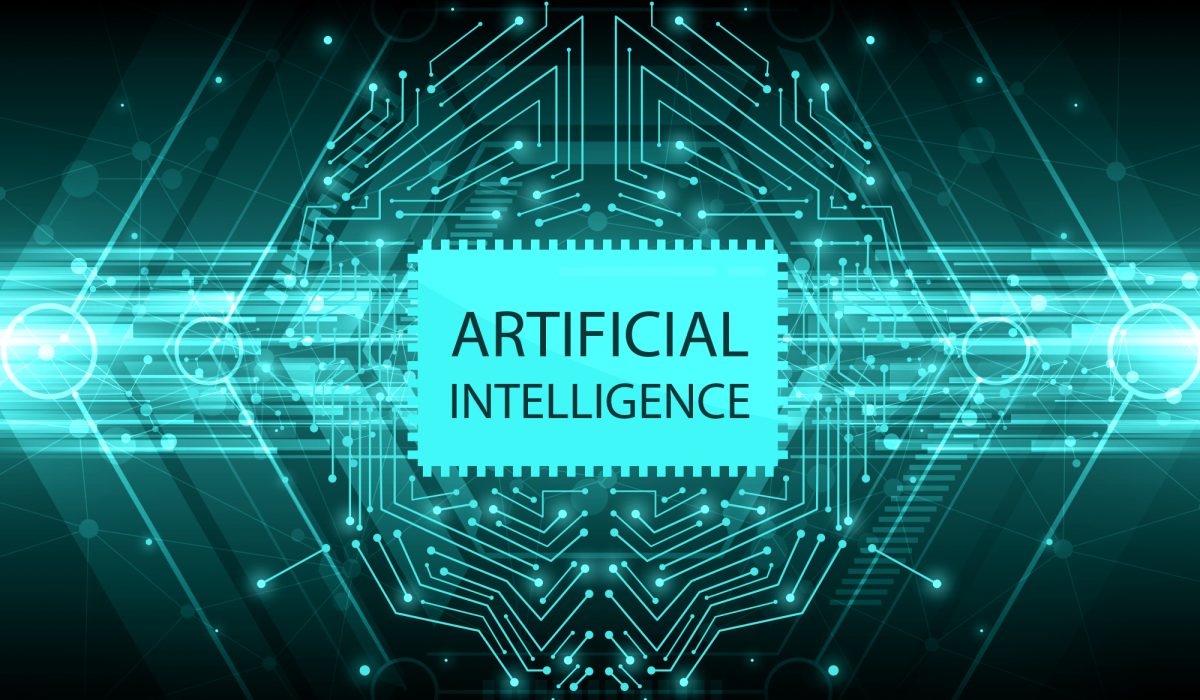This website uses cookies so that we can provide you with the best user experience possible. Cookie information is stored in your browser and performs functions such as recognising you when you return to our website and helping our team to understand which sections of the website you find most interesting and useful.
- Irish Pakistani ICT Professional in Ireland
- info@ipip.ie
How Artificial Intelligence is Changing Our Society – Research Paper

The great collision of AI and human race..
April 15, 2023
Why DevOps is important for any organisation?
April 18, 2023How Artificial Intelligence is Changing Our Society
Research Paper
April 14, 2023
Abstract:
This research paper highlights many ways in which AI is already impacting our lives and how it may affect society in the future. While there are certainly potential negative impacts, there are also many positive implications of AI. It is essential to strike a balance between the benefits and risks of this technology, and to ensure that AI is deployed in a way that is ethical, transparent, and just.
Introduction
Artificial intelligence (AI) has been rapidly advancing in recent years, with applications ranging from healthcare to finance, from transportation to entertainment. As the technology becomes more sophisticated, it has the potential to revolutionize the way we live and work.
However, with these advancements come significant ethical concerns, particularly when it comes to the use of AI in decision-making processes, such as in war conflicts. The use of AI in healthcare also presents challenges, such as ensuring the ethical use of patient data. Additionally, the use of AI technologies such as algorithms, artificial neural networks, and cloud and distributed computing solutions differs from traditional enterprise computer-based desktop systems, with associated pros and cons.
This research paper aims to explore the various ethical issues and challenges associated with the use of AI, as well as the potential benefits and drawbacks of implementing AI technologies in enterprise software development. Through this exploration, we can gain a better understanding of the impact of AI on society and the importance of responsible and ethical use of this technology.
The Advancements in AI
Artificial Intelligence (AI) has been rapidly advancing in recent years with significant progress being made in areas such as deep learning, natural language processing, and robotics. The development of these technologies has already begun to transform many industries, including healthcare, finance, and transportation.
Deep Learning:
One of the most significant advancements in AI is deep learning. It is a type of machine learning that uses artificial neural networks to analyze and learn from large amounts of data. Deep learning has enabled significant improvements in image and speech recognition, language translation, and decision-making capabilities. For example, autonomous vehicles are being developed with the help of deep learning algorithms to improve safety and reduce accidents on roads. Another example is the development of virtual assistants like Siri, Alexa, and Google Assistant, which are able to recognize and respond to human language in a natural way.
Natural language:
Natural language processing is another area where significant advancements in AI have been made. It is a subfield of AI that focuses on the interaction between humans and computers using natural language. It involves the development of algorithms that can understand, interpret, and generate human language. One of the most prominent examples of natural language processing is Chabot’s, which are widely used in customer service to provide quick and accurate responses to customers’ queries. Another example is the development of language translation apps like Google Translate, which have significantly improved accuracy in recent years.
Robotics:
Robotics is yet another area where AI is making significant progress. It involves the development of machines that can perform tasks autonomously or with minimal human intervention. Robotics has been applied in industries like manufacturing, healthcare, and transportation to improve efficiency, accuracy, and safety. For example, robotic surgery has enabled doctors to perform minimally invasive surgeries with greater precision, reducing the risk of complications. Autonomous drones are being developed to deliver packages, monitor crops, and conduct search and rescue operations in hazardous environments. Rainer Bischoff, who is the head of research at Kuka, a German manufacturer of industrial robots. Bischoff talks about the future of robotics and the challenges that come with it. He emphasizes the importance of improving human-robot interaction and developing robots that can perform complex tasks with a higher degree of autonomy. Bischoff’s insights highlight the importance of ongoing research and development in the field of robotics to create more advanced and capable robots that can perform a wide range of tasks and operate safely alongside humans.
These advancements in AI have significant potential benefits, they also raise concerns about their impact on society. One of the main concerns is the potential loss of jobs as AI systems become increasingly capable of performing tasks that were previously done by humans. This could lead to significant economic and social disruptions, particularly for low-skilled workers. Another concern is the potential for AI to be used for malicious purposes, such as cyber-attacks, surveillance, and misinformation campaigns.
AI is rapidly advancing, and its impact on society is likely to be significant. While the potential benefits are enormous, there are also significant risks and challenges that need to be addressed. The development of AI must be done in a way that is both responsible and ethical, with a focus on ensuring that the benefits are shared fairly and the risks are minimized.
Examples of AI applications:
There are numerous examples of AI applications in various fields, as highlighted in this paper.
AI in Healthcare:
In the field of healthcare, AI has been used to develop innovative solutions for diagnosing and treating diseases. For instance, IBM Watson has been used in the field of oncology to analyze large volumes of medical data and provide personalized treatment recommendations to patients. Similarly, AI algorithms have been used to analyze medical images, such as X-rays and MRI scans, to identify abnormalities and assist in diagnosis.
The integration of AI in healthcare has immense potential in improving patient outcomes and quality of life, as demonstrated by the work of Hugh Herr and Adrianne Haslet-Davis (Dancer who lost her legs). Herr’s use of AI in prosthetic limbs allows for more natural movements and personalized care, while AI in medical imaging and data analysis can aid in the detection and treatment of medical conditions. However, ethical concerns surrounding patient privacy and equitable access to AI-powered healthcare must also be addressed. The work of Herr and Haslet-Davis serves as a promising example of how AI can positively impact healthcare and improve the lives of patients. As technology continues to advance, it is crucial to ensure its ethical and equitable implementation to ensure the best possible outcomes for all patients.
AI in finance:
In the finance industry, AI is being used for fraud detection and prevention, as well as for algorithmic trading. For example, credit card companies use AI to analyze patterns in consumer spending behavior to identify and prevent fraudulent transactions. Investment firms also use AI to analyze market trends and execute trades automatically based on predetermined algorithms.
AI in Transportation:
In the transportation industry, AI is being used for autonomous vehicles, which have the potential to revolutionize the way we travel. Companies like Tesla and Google are developing self-driving cars that use AI to navigate roads, avoid obstacles, and make decisions in real-time.
AI in Customer Service:
Many companies are using AI-powered Chabot’s to provide instant customer support and answer frequently asked questions. These Chabot’s are trained using natural language processing algorithms and can understand and respond to customer queries in real-time, providing a more personalized experience.
AI has the potential to transform various industries and improve efficiency, accuracy, and decision-making. As technology continues to advance, we can expect to see more AI applications in fields such as education, agriculture, and manufacturing.
The AI Race
The development of artificial intelligence (AI) has become a global competition, with China and the United States leading the way. Both countries have invested heavily in AI research and development, as well as in education and training programs to create a workforce capable of driving innovation in this field.
China has made significant strides in AI development, with the government launching a plan in 2017 to become the world leader in AI by 2030. The country has already made significant progress in areas such as facial recognition technology and autonomous vehicles. Chinese tech giants such as Baidu, Alibaba, and Tencent are also heavily investing in AI research and development, with Baidu alone investing over $1.5 billion in autonomous driving technology.
Meanwhile, the United States has a long history of leadership in AI development, with Silicon Valley serving as a hub for innovation and investment in this field. The US government has also launched initiatives to advance AI development, including the National AI Initiative Act of 2020, which seeks to establish a national strategy for AI research and development. American tech giants such as Google, Amazon, and Microsoft are also investing heavily in AI, with Google alone spending over $3.9 billion on AI research and development.
Other countries are also vying for a spot at the forefront of AI development, including Japan, South Korea, and the United Kingdom. However, the competition between China and the US is particularly significant given their global economic influence and technological capabilities.
The competition to lead in AI development has implications for a range of industries and fields, from healthcare and finance to transportation and national security. The country or countries that lead in AI development are likely to have a significant economic advantage, as well as a potential edge in military and strategic capabilities. However, there are also concerns around the ethical and social implications of AI, particularly in areas such as privacy and job displacement. As such, it is important for countries to not only focus on advancing AI development but also to address these broader issues and consider the impacts of AI on society as a whole.
Germans Interest in AI
There have been various initiatives in Germany aimed at promoting AI education and development. For instance, the German government has been investing in AI research, with the aim of fostering the development of AI technologies and applications. In 2018, the German Federal Ministry of Education and Research launched a strategy for AI research, which includes measures such as funding for research projects, the establishment of AI research centers, and the development of AI-related educational programs.
Germany is home to several universities that offer AI-related programs and courses. For example, the Technical University of Munich offers a Master’s program in AI, which covers topics such as machine learning, natural language processing, and computer vision. Similarly, the University of Stuttgart offers a Bachelor’s program in Computer Science with a specialization in AI.
There are also several private initiatives aimed at promoting AI education and development in Germany. For instance, the AI Campus is a training platform that offers courses in AI and machine learning. The platform is designed for both individuals and businesses, and offers a range of courses that cover different aspects of AI and machine learning, including data analysis, deep learning, and neural networks.
German companies have been investing in AI research and development. For example, Siemens has established an AI Lab, which focuses on developing AI technologies for industrial applications. Similarly, Volkswagen has established an AI research center, which is focused on developing AI technologies for the automotive industry.
AI and Society
Curiosity, creativity, and imagination are crucial for building AI software systems that are effective and beneficial for society. Curiosity drives researchers to explore new technologies and techniques, while creativity and imagination help to develop innovative solutions to complex problems. In the case of AI, these qualities are essential for creating systems that can adapt to changing environments, learn from data, and make decisions based on that data.
For example, in the field of healthcare, researchers like Hugh Herr have utilized their curiosity, creativity, and imagination to develop personalized bionic limbs that incorporate AI. Their innovative solutions have not only allowed amputees to regain mobility and quality of life but have also provided valuable data to improve prosthetic technology for others.
Similarly, in the field of robotics, Rainer Bischoff’s curiosity and creativity have driven Kuka’s development of advanced robotics solutions for industries like automotive manufacturing. These robotic systems have increased efficiency and productivity while also reducing the risk of injury for workers.
In the case of war conflicts, AI systems that replace manual decision-making present ethical issues that require careful consideration. It is important to ensure that these systems are developed with a focus on ethical principles and values, including transparency, accountability, and fairness. Curiosity, creativity, and imagination can help to develop AI systems that are aligned with these principles, as well as address potential issues related to bias, privacy, and security.
Curiosity, creativity, and imagination are essential qualities for developing AI software systems that benefit society. These qualities drive innovation and enable researchers to develop solutions to complex problems, such as personalized prosthetics or advanced robotics systems. However, it is important to consider ethical issues related to AI, particularly in cases where it replaces manual decision-making, and ensure that AI systems are developed with a focus on ethical principles and values.
AI and Children
Impact AI on children:
The impact of artificial intelligence (AI) on children has become a topic of increasing concern in recent years, as smart toys and devices have become more prevalent in homes and classrooms. While these technologies can offer new opportunities for learning and play, there are also potential risks and challenges that must be considered.
One of the main concerns is the effect that AI-powered devices may have on children’s development and socialization. Some experts argue that interacting primarily with devices could limit children’s ability to form meaningful relationships with others, develop social skills, and engage in imaginative play. Others argue that smart toys and devices can actually promote creativity and curiosity, and may even provide a platform for developing important technical skills.
Examples of smart toys and devices designed for children include robots like Cosmo and Julia, which can play games and respond to voice commands, as well as virtual assistants like Alexa, which can answer questions and play music. These devices are often marketed as educational tools that can help children learn new skills and concepts, such as programming and problem-solving.
There are also potential risks associated with the use of these devices. For example, some experts have raised concerns about the collection and use of children’s personal data by these devices, as well as the potential for hackers to gain access to sensitive information.
To address these concerns, some countries have taken steps to promote AI literacy and education among children and parents. For example, in Germany, the government has launched initiatives aimed at increasing awareness and understanding of AI among young people, including the creation of an online platform for AI education.
The impact of AI on children is a complex and multifaceted issue that requires careful consideration and ongoing research. While these technologies may offer new opportunities for learning and play, it is important to weigh the potential risks and benefits, and to ensure that children and parents are equipped with the knowledge and skills necessary to navigate this rapidly changing landscape.
Children’s Perception and Trust in AI technology:
The documentary discusses research on children’s perception and trust in AI technology. The research conducted by Stefanie Druga found that children are fascinated by AI and have a natural curiosity about its capabilities. However, after being exposed to programming and training AI devices, children become more skeptical and discerning about the technology. They understand that AI devices are capable of answering certain types of questions, but not others.
This research highlights the need for increased AI literacy among children and parents to help them make good use of the technology. Parents also play an important role in the conversation about AI, and it is essential for families to understand how AI works. This understanding will allow them to make informed decisions about the use of AI devices and promote the children’s creativity while avoiding the unnecessary use of technology.
The research suggests that children’s perception and trust in AI technology are not static, but rather can change based on their exposure and understanding of the technology. This underscores the importance of educating children and parents about AI and its capabilities.
AI Literacy
Importance of AI literacy:
The importance of AI literacy for both children and parents is crucial in making informed decisions about technology use. Stefanie Druga’s research on smart toys and devices showed that children’s perceptions of AI changed as they gained more knowledge about its capabilities and limitations. This emphasizes the need for education and awareness about AI among children. Furthermore, AI technology is rapidly advancing, with applications in various fields such as healthcare, finance, and transportation. Therefore, it is important for parents to be aware of the potential uses and risks of AI in their daily lives.
Initiatives in Germany to promote AI education and development reflect the growing importance of AI literacy. For example, the German government has invested in developing AI education programs for schools and universities, as well as establishing research centers and funding for startups in the field. These initiatives aim to equip the future workforce with the necessary skills to thrive in a technology-driven world.
However, AI literacy is not limited to technical skills alone. It also involves ethical considerations, such as bias and privacy concerns. Educating children and parents about these issues is crucial in promoting responsible and safe use of AI technology. This can be done through initiatives such as workshops, online resources, and interactive learning tools.
AI literacy is essential for both children and parents to make informed decisions about technology use. With the rapid advancement of AI technology and its increasing prevalence in our daily lives, it is important to stay informed and aware of its capabilities and limitations, as well as the ethical considerations surrounding its use.
The role of AI in promoting creativity
The potential for AI to promote creativity has been explored in various fields, such as music and art. AI tools can generate new and innovative ideas by processing and analyzing vast amounts of data, which can be useful for artists and designers. For example, the Google Magenta project uses machine learning algorithms to create music compositions in different genres. Similarly, the AI system Aiva creates original classical music pieces based on the user’s preferences.
AI limitations compared to Human Interactions
AI can provide assistance and inspiration; it has limitations compared to human interactions. Human creativity is often driven by emotions, intuition, and personal experiences, which are difficult to replicate in machines. Human interactions and collaborations can also spark creativity and lead to new ideas that may not have emerged otherwise. For example, brainstorming sessions and discussions among artists and designers can lead to innovative solutions and breakthroughs.
Moreover, some argue that excessive reliance on AI tools can hinder creativity, as it may lead to a homogenization of ideas and styles. For instance, using AI-generated designs or templates may result in a lack of originality and uniqueness, as many people may be using the same tools and resources.
AI can be a valuable tool for promoting creativity, but it should not replace human interactions and individuality in the creative process. It is important for individuals to use AI tools in a balanced and informed manner, and to recognize their limitations and potential biases.
Fake news:
Fake news is a growing problem in today’s society and has been discussed in the documentary from various aspects. One issue is the role of social media in spreading false information. The ease of sharing information on social media platforms has led to the rapid dissemination of fake news stories, often without fact-checking or verification. This has the potential to influence public opinion and even impact political outcomes. Platforms like Facebook and Twitter have attempted to combat this problem by implementing fact-checking measures and flagging potentially misleading content.
Another issue is the use of AI and machine learning to create deep fakes – realistic-looking videos that manipulate footage to present a false narrative. Deep fakes have the potential to spread misinformation and cause harm. However, AI can also be used to detect deep fakes and distinguish between authentic and manipulated content.
Additionally, there is a need for media literacy and critical thinking skills to combat fake news. Education on how to identify credible sources and evaluate information is essential in the current media landscape. It is also important to hold media organizations accountable for their reporting and fact-checking practices.
The discussion of fake news in the documentary highlights the need for greater awareness and action to combat this issue. Social media platforms, AI technology, media literacy education, and accountability are all necessary to address the spread of false information and ensure the public has access to accurate and trustworthy news.
AI and War:
The use of AI in war conflicts raises several ethical concerns, particularly regarding the replacement of manual decision-making with autonomous software-based solutions. One major concern is the potential lack of accountability and responsibility for decisions made by AI. Unlike human decision-makers, AI does not have the same level of consciousness and moral agency, leading to questions of who would be responsible for any negative outcomes resulting from autonomous decisions made by AI.
Another concern is the potential for bias in AI decision-making. AI algorithms are only as unbiased as the data they are trained on, and if the data used to train the algorithm is biased, the algorithm will reflect that bias. This could lead to discriminatory or unfair decisions that disproportionately affect certain groups.
There is also a concern about the potential for AI to escalate conflicts. If AI systems are making decisions without human intervention, there is a risk that they may make decisions that lead to further escalation of conflict, rather than de-escalation.
Use of AI in war conflicts raises questions about the nature of war itself. If wars are fought using autonomous AI systems, it raises questions about the morality and ethics of war. Is it ethical to engage in war if there are no human casualties on one’s own side? What are the implications of delegating war to machines?
In terms of future implications, the continued development and deployment of AI in war conflicts will require careful consideration of these ethical issues. It will be important to ensure that AI systems are transparent, accountable, and unbiased, and that they are used in a way that promotes de-escalation and minimizes harm to civilians. The deployment of AI in war conflicts may also require the development of new international laws and regulations to govern its use.
Use of AI in war conflicts raises several ethical concerns regarding accountability, bias, escalation, and the nature of war itself. Addressing these concerns will be crucial to ensure that the deployment of AI in war conflicts is ethical and promotes peace and stability.
AI and Enterprise Software’s:
Enterprise software development can integrate future requirements using Artificial Intelligence (AI) tools in a variety of ways. AI tools can be used to analyze large amounts of data to identify patterns and trends that can help businesses anticipate future needs and adapt their software accordingly. For example, predictive analytics can be used to analyze customer behavior and preferences to develop more personalized software features.
Another way that AI can be used in enterprise software development is through natural language processing (NLP) and machine learning. NLP allows software to understand and interpret human language, which can be used to develop more intuitive user interfaces and more effective Chabot’s or virtual assistants. Machine learning can be used to train software to recognize and respond to user behavior, allowing it to adapt and improve over time.
AI tools can be used to automate certain tasks in software development, such as testing and debugging. This can help reduce errors and improve the overall quality of the software, as well as free up developers to focus on more complex tasks.
One example of a company that is using AI in enterprise software development is Salesforce. Salesforce has developed an AI-powered platform called Einstein, which can be used to analyze customer data to identify trends and make predictions about future needs. Einstein can also be used to develop personalized recommendations and automate certain tasks, such as lead scoring and data entry.
Another example is Microsoft, which has integrated AI tools into its Dynamics 365 platform to help businesses automate sales and marketing processes. The platform uses AI-powered Chabot’s to provide customer service and support, as well as machine learning to analyze customer data and identify patterns that can be used to improve marketing strategies.
AI tools have the potential to revolutionize enterprise software development by enabling businesses to develop more personalized and intuitive software, automate tasks, and anticipate future needs. As the field of AI continues to advance, it is likely that we will see even more innovative uses of AI in enterprise software development in the future.
AI vs Traditional Approaches:
The use of algorithms, Artificial Neural Networks (ANNs), cloud computing, and distributed computing solutions in enterprise software development differs significantly from traditional desktop-based systems. Algorithms and ANNs are at the core of AI technology and enable software systems to learn and adapt to data input, providing more efficient and effective solutions. Cloud computing allows for greater flexibility in resource allocation and scalability, making it easier to handle large volumes of data and complex operations. Distributed computing solutions provide a means for processing large amounts of data in parallel, enabling faster and more efficient computations.
The pros of using these AI technologies for enterprise software development are significant. These technologies can provide more efficient and effective solutions for complex problems, reducing costs and improving productivity. They can also handle large volumes of data and complex operations more easily, enabling better decision-making and more accurate predictions. Additionally, these technologies can help identify patterns and trends in data, providing valuable insights that can inform business strategies.
There are also cons associated with the use of these AI technologies. The complexity of these systems can make them difficult to implement and maintain, requiring specialized skills and knowledge. Additionally, the use of cloud computing and distributed computing solutions can increase the risk of security breaches and data loss. Finally, there is a risk that the use of AI technologies in enterprise software development could lead to job displacement, as some tasks may become automated.
Algorithms, ANNs, cloud computing, and distributed computing solutions in enterprise software development offers significant benefits but also comes with challenges. To maximize the benefits and mitigate the risks, it is important to carefully consider the implementation and maintenance of these technologies, as well as their potential impact on the workforce.
Conclusion:
In conclusion, this paper highlighted the immense potential of AI in various fields, including healthcare, education, and warfare, as well as the ethical and societal implications of its use. The ability of AI to process large amounts of data quickly and accurately has led to its widespread adoption in fields such as medical imaging, data analysis, and personalized prosthetic devices.
AI also raises ethical concerns such as privacy, bias, and the potential for exacerbating existing inequalities. It is crucial to address these concerns to ensure that AI is developed and used in a manner that benefits all members of society. To this end, researchers and policymakers must work together to develop guidelines and regulations for the ethical use of AI.
Development of AI requires a multidisciplinary approach that involves creativity, imagination, and curiosity. The ability to think outside the box and develop innovative solutions is crucial to creating AI systems that truly benefit society.
In enterprise software development, the use of AI technologies such as algorithms, artificial neural networks, and cloud computing offers many advantages such as increased efficiency and scalability. However, it also presents challenges such as the need for specialized skills and potential security risks.
It highlights the importance of approaching AI development and implementation with a comprehensive understanding of its capabilities, limitations, and ethical considerations. By doing so, we can harness the potential of AI to address societal challenges and improve the quality of life for all members of society.






